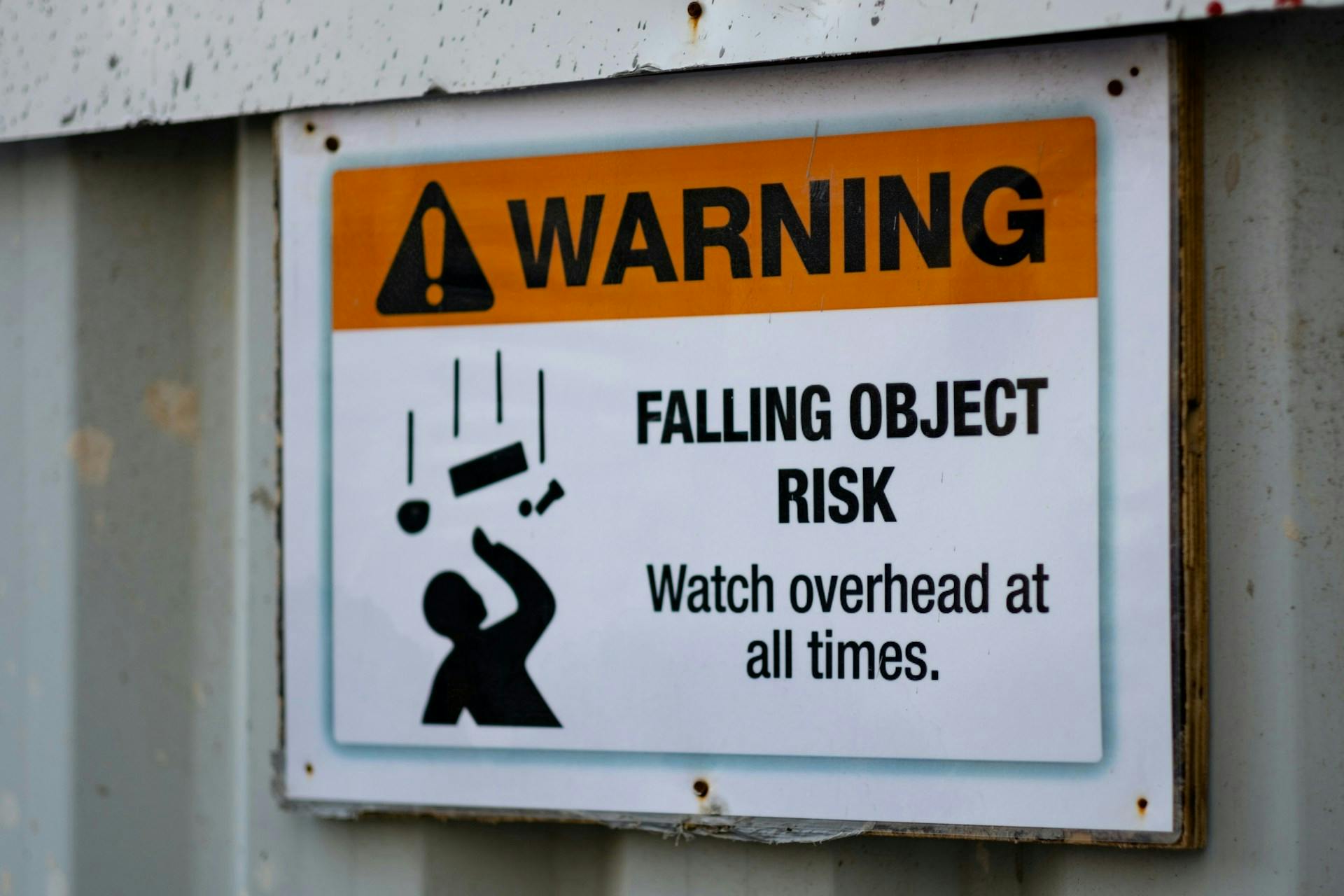The Essential Checklist for OSHA Hospitalization Reporting Compliance


When a serious workplace injury occurs, getting medical help is the first priority but it’s not the only one. If that injury results in a hospitalization, employers must also act quickly to meet regulatory obligations. Under OSHA rules, certain hospitalizations must be reported within just 24 hours. Missing that window can trigger significant penalties, including fines, investigations, and long-term compliance risk.
This is especially important for companies in high-risk industries like manufacturing, construction, and logistics. These employees are more likely to experience serious incidents on the job and more likely to be affected if your organization doesn’t have a streamlined reporting process in place. Many companies fall short here, not because they don’t care, but because they don’t fully understand the criteria, timeframes, or procedures involved in OSHA hospitalization reporting.
A solid reporting system does more than avoid fines. It shows your workforce that safety matters, builds trust with regulators, and can even reduce future incidents through better tracking and accountability. In this guide, we’ll walk through the essential checklist for OSHA hospitalization reporting compliance—so you know exactly what to do, when to do it, and how to protect both your team and your business.
OSHA Hospitalization Reporting Regulatory Requirements
OSHA has established clear standards for when and how workplace hospitalizations must be reported. These rules apply to nearly all employers under OSHA jurisdiction and include specific timing requirements that are essential for maintaining compliance.
OSHA Hospitalization Reporting Obligations
Under federal regulation 29 CFR 1904.39, most employers regardless of size or industry, must report certain hospitalizations. Only a few exceptions apply, typically for low-risk industries.
To be considered a reportable hospitalization, three criteria must be met:
- The employee must be formally admitted to the in-patient service of a hospital or clinic for care or treatment. Observation or diagnostic testing alone does not qualify.
- The hospitalization must be work-related.
- The admission must occur within 24 hours of the work-related incident.
Not every trip to the hospital triggers a reporting requirement. We will discuss exceptions in the next section.
OSHA Hospitalization Reporting Timeframes
Two critical 24-hour windows govern hospitalization reporting:
- The hospitalization must take place within 24 hours of the work-related incident for it to be reportable.
- The employer must report the hospitalization to OSHA within 24 hours of learning about it.
The clock does not start at the time of the incident. Instead, it starts when the employer learns of the hospitalization. For example, if an employee is injured on a Friday but informs you of their hospital admission on Monday, the 24-hour reporting window begins on Monday.
Additionally, if you later find out that a previously unreported hospitalization was in fact work-related, OSHA requires that it be reported within 24 hours of discovering the work-relatedness. This guidance is based on OSHA’s official interpretation letters.
Exceptions and Special Considerations
Not every workplace hospitalization triggers a reporting requirement. Some incidents are excluded, and others fall into special categories with unique rules. Understanding these distinctions helps you avoid unnecessary reporting while remaining compliant in the cases that matter.
Non-reportable Scenarios
Several common situations do not require notification to OSHA:
- Hospitalizations more than 24 hours after the incident: If an employee is admitted to the hospital more than 24 hours after the work-related event, it is not reportable.
- Observation or diagnostic testing without admission: A hospital visit for tests or monitoring—without formal admission—does not meet the reporting threshold.
- Emergency room visits without inpatient admission: Even if treatment is provided in the ER, the case is not reportable unless the employee is formally admitted.
- Medical issues unrelated to work: Health events like heart attacks that happen at work but are not caused or worsened by job duties are excluded.
For instance, if an employee injures their hand on a Tuesday but isn’t admitted to the hospital until Thursday, the case falls outside the 24-hour window and is not reportable.
However, non-reportable incidents may still be recordable on your OSHA 300 log if they meet the criteria for recordable injuries.
Special Cases
Several special circumstances have unique reporting considerations:
Motor vehicle accidents: Hospitalizations from accidents on public roads are exempt from reporting unless they occur in a construction work zone. OSHA's guidance clarifies that employers need not report hospitalizations resulting from motor vehicle accidents on public streets unless they occur in a construction work zone.
Commercial transportation: If an employee is hospitalized due to an incident on a commercial airplane, train, or bus while traveling for work, reporting is not required.
COVID-19 hospitalizations: According to OSHA's COVID-19 recordkeeping guidance, these are only reportable if:
- The case is confirmed as COVID-19.
- The case is work-related.
- The hospitalization occurs within 24 hours of workplace exposure.
Since COVID-19 symptoms typically develop over days, few cases meet the 24-hour hospitalization window, making most COVID hospitalizations non-reportable.
When you're unsure about whether to report a case, safety professionals recommend talking with legal counsel specializing in OSHA compliance or contacting your OSHA Area Office for guidance.
OSHA Hospitalization Reporting Procedures
To stay compliant during workplace emergencies, it's critical to understand the correct channels and information required for reporting hospitalizations to OSHA. Clear procedures reduce confusion and speed up response time when it matters most.
Channels for OSHA Hospitalization Reporting
OSHA provides three reporting options. Choose the one that fits your situation best:
- Call your nearest OSHA Area Office - Speaking directly with local staff allows you to ask questions and receive guidance. A full directory of OSHA Area Offices is available by state.
- Call the 24/7 OSHA Hotline: 1-800-321-OSHA (6742) - Ideal for after-hours incidents, this option gives you immediate confirmation that your report has been received.
- Submit a report online through OSHA’s Serious Event Reporting Portal - This method works well for straightforward cases and automatically creates a record of your submission. However, it doesn’t provide instant feedback.
For complicated situations or if you’re unsure whether an incident is reportable, phone contact is usually the best choice. For standard cases during business hours, the online portal offers convenience and good documentation.
Required Information for OSHA Hospitalization Reporting
Before contacting OSHA, make sure you have the following details ready:
- Name of your establishment
- Address where the incident occurred
- Time and date of the incident
- Type of reportable event (hospitalization)
- Number of employees hospitalized
- Names of the affected employees
- Name and phone number of the employer contact
- Brief description of the work-related incident
To streamline this process, develop a standardized incident reporting form that captures all of the above. Once you've reported the incident, document all communication with OSHA for future reference. This includes:
- Date and time the report was made
- Name of the OSHA representative (if reported by phone)
- Confirmation number (if submitted online)
- Any follow-up instructions received from OSHA
No matter which method you use, always request confirmation of your report. Keeping a thorough record can be crucial if questions arise later about whether your organization met its reporting obligations.
Best Practices for OSHA Hospitalization Reporting Compliance
A reliable incident management system is essential for accurate and timely OSHA reporting. These systems not only support regulatory compliance but also reduce stress during emergencies and help prevent future incidents by improving response workflows.
Incident Management for Effective OSHA Hospitalization Reporting
To ensure consistent and compliant reporting of workplace hospitalizations, put the following practices into place:
- Designate reporting personnel: Assign both a primary and a backup employee to handle OSHA reporting. This ensures that someone is always available, even during vacations or off-hours.
- Develop written procedures: Create clear, step-by-step protocols that outline when and how to report incidents. Include details like reporting thresholds, contact information, deadlines, and internal safety procedures.
- Implement tracking systems: Use mobile first tools to set automated reminders for key deadlines. This helps ensure reporting occurs within OSHA’s required 24-hour window.
- Document all incident details: Collect comprehensive information about the event, including photographs, witness statements, and corrective actions taken. Strong documentation supports both regulatory compliance and internal investigations.
- Train supervisors and frontline managers: Make sure team leaders know how to recognize potentially reportable incidents and understand the importance of notifying the appropriate safety personnel right away.
- Establish fast communication channels: Set up a reliable process for field locations to alert corporate safety teams quickly. Eliminating delays in internal reporting improves overall compliance performance. SMS platforms are often the best for frontline or non-desk workers.
- Conduct periodic drills: Practice your reporting procedures during mock incidents to uncover and correct any weak points before a real emergency occurs.
Organizations with well-defined incident management systems and consistent safety protocols don’t just meet OSHA requirements, they also experience fewer workplace injuries and lower workers' compensation costs. Investing in these best practices pays off in both safety outcomes and operational resilience.
Safety Communication That Works When It Matters Most
Timely hospitalization reporting is about creating a workplace culture where safety is taken seriously and communication is clear, fast, and accessible. Yourco helps companies meet that standard by delivering critical information where it’s most effective: straight to employees' phones via SMS.
Unlike emails that go unread or app-based systems that require downloads, logins, or internet access, Yourco reaches every employee instantly, no training required. This is especially crucial in environments with non-desk workers who don’t have easy access to a computer or company intranet. With Yourco’s SMS-based communication platform, you can communicate safety alerts, incident response steps, and follow-up guidance in real time.
More than just a messaging platform, Yourco offers built-in tools to streamline incident reporting:
- Mobile-Delivered Forms: You can send incident report forms via text, enabling employees to respond immediately—even from the field. This cuts down reporting delays and ensures faster OSHA compliance.
- Two-Way Communication: Workers can reply directly to messages, making it easier to collect details, confirm status updates, or escalate a situation as needed.
- AI-Powered Translations: With support for over 135 languages, Yourco ensures every employee can understand and respond to safety communications in their preferred language. This is critical in diverse workplaces where miscommunication can lead to compliance gaps or injury risk.
- Photo-Based Reporting: Workers can take a photo of a hazard or incident and send it instantly via text. This visual context improves documentation and helps safety teams assess the situation more accurately and respond faster.
- Frontline Intelligence at Scale: For companies with hundreds of manufacturing plants, warehouses, or corporate offices, Yourco enables centralized visibility across all locations. Safety leaders can monitor incident reports, response times, and trends in real time—creating a unified view of what’s happening on the ground and enabling faster, more informed decisions from headquarters.
Yourco also keeps a full log of all communications for audit readiness, including message delivery, response tracking, and secure access control, something generic texting tools or consumer messaging apps cannot offer.
In short, while email, bulletin boards, or mobile apps often miss the mark in speed, clarity, and reach, Yourco bridges the gap with secure, no-barrier SMS technology purpose-built for operational teams. It doesn’t just improve incident reporting, it transforms your entire internal communication strategy into one that’s proactive, inclusive, and OSHA-ready.
Try Yourco for free today or schedule a demo and see the difference the right workplace communication solution can make in your company.



